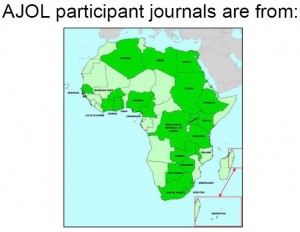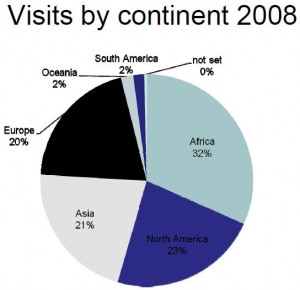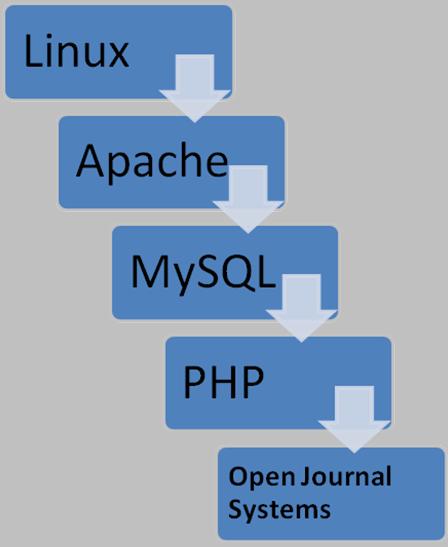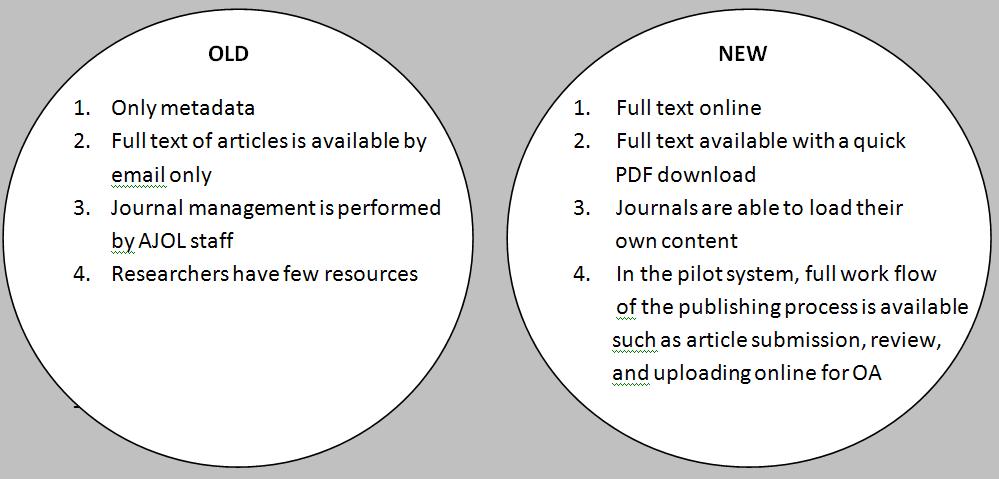Open Journal Systems (OJS) software as used by African Journals Online (AJOL) – The Session Blog
July 9, 2009 at 10:30 a.m. SFU Harbour Centre (remote session). Rm. 7000
Susan Murray (Source)
Background
Ms. Susan Murray is a proactive individual working with the African Journals Online (AJOL), a non-profit organization, as the executive director for over two years. Her she academic background is on development economics and she is focused on opening access to information in developing countries such as Africa.
Session Overview
Ms. Murray’s session is a journey from the 1990s to present day focusing on the progression of access to African Journals Online (AJOL) (Session Abstract). She begins with an overview of the journal, followed by the users and stakeholders involved, which she ties in to a comparison of the old and new systems along with the future outlook for AJOL, and finally she concludes the presentation with a business plan and parting remarks.
(1) Overview of AJOL
Ms. Susan Murray started the presentation with the following quote from Mamphela Ramphele :
“There is no way we can succeed in the eradication of poverty if the developing world is not part of knowledge creation, its dissemination and utilization to promote innovation. Higher education is a critical factor in making this possible and must be part of any development strategy.”
– Mamphela Ramphele (2000)
Ms. Murray goes on to explain the importance of higher education and policies governing such institutes. She indicates that there is a long way to go in terms of sharing and transferring knowledge to the developing worlds, however it must be done and there is harm in not doing so as innovation cannot advance in these developing countries. In Africa the process of dissemination has already begun with AJOL hoping to increase its visibility and accessibility of open journal sources. Currently, AJOL has 350 titles with over 40000 articles (and free metadata) which are a combination of open-access (OA) and subscription based titles that cover majority of the academic spectrum. Ms. Murray pointed out that some of the titles are not found online anywhere else but on AJOL! This shows the exclusivity of some of the titles that are secured by AJOL. In order to join AJOL, Ms. Murray listed the following criteria which must be adhered to – this mostly encourages more of the ‘fringe’ journals to upload their documents for increased visibility:
- Must be original research
- Needs to be peer-reviewed
- All content must be given to AJOL
- Permission must be granted to AJOL
- Content must be published in the African continent
(2) The Stakeholders
It is fascinating to know that as of today, Ms. Murray highlighted the 26 African countries with journals on AJOL (See Figure 1a). Figure 1b is a ‘Google Maps mashup’ which highlights the actual journals (with corresponding links) in a particular country. Ms. Murray exclaimed this is an impressive display along with the number of visits by other continents as illustrated in Figure 2. Africa had the highest percentage of visitors at 32% of the total population who accessed the site, while North America, Asia, and Europe had 23%, 21%, and 20% respectively.

Figure 1a: Distribution of Journals in Africa (used with permission from Ms. Murray)
View Map of Africa in a larger map

Figure 2: Visits by continent (used with permission from Ms. S. Murray)
(3) Comparison of old and new systems
After the overview and elaboration of the users and stakeholders of AJOL, Ms. Murray went into the details of the AJOL on OJS 2.2.2. She expressed the benefits of such a partnership with PKP led to better upgrading of the system. She found that more advanced versions could also be complied and were easier to upload which allowed for more capabilities in the platform that were not possible before. Figure 3 shows flowchart of the software and resources used ending with final product of the Open Journal Systems coded through the PHP scripting language using MySQL as the database management tool in the APACHE web browser run from the Linux operating system.

Figure 3: Software and Resources (created by Pam Gill)
A comparison of the new and old system is shown in Figure 4. The new approach is useful for all parties involved and is an excellent search tool with a new look and feel. Currently, as of July 2009, journals now manage their own AJOL pages in terms of the workflow management. In the future, Ms. Murray envisions that journals will be able to host their own versions of OJS on the PKP harvester which acts as a metadata aggregator. The newer versions will include a statistics package and offline plug-ins when connectivity is interrupted. The offline plug-in option will be crucial for users living in remote areas. Eventually, Ms. Murray envisions all journals being independent and managing their own pages.

Figure 4: Comparison Chart of Old and New Systems (created by Pam Gill)
To conclude her presentation, Ms. Murray placed great emphasis on the need for the flow of global information from the North to the South (Evans and Reimer, 2009). She stressed the implementation of a new business plan that would allow journals to consider OA as a more viable possibility via AJOL/PKP. The full OJS functionality on AJOL has already made a huge difference as discussed earlier as open source software (OSS) has matured considerably. To summarize Ms. Murray ended her presentation one two key points to promote and continue the dissemination of literature in developing countries. First she brought forth the importance of carefully selecting the best tool that will take into account the needs of the users. Next, she advised to carefully align yourself with partners that you trust and who will support your initiatives for the right reasons. The following quote from Ms. Susan Murray herself summarizes these points:
“Relationships and communication are still the drivers of success, the technological tools are just the vehicle.”
– Susan Murray (2009)
This quote from Ms. Murray is used to illustrate that the technology can help propel the dissemination process in varying capacities. Technology depends on the specifications and limitations of the hardware and software. Yet, at the end of the day, relationships with others are the most important in terms of communicating, working collaboratively sharing ideas, which will ultimately lead to the success (or failure) of your goals and aspirations.
Questions from the audience asked at Ms. Murray’s session:
Question: Is AJOL published in other languages (referring to Figure 1 of African map from Susan’s PowerPoint slide)? Does AJOL have plans to bring more non-English journals to the portal?
Answer: Yes, we are hoping to introduce this to Francophone countries by starting the process of translating to French. So there will be an English/French option. We have a few journals published in Portuguese, Arabic. If we have a journal that is online (and space is NOT a problem) then we can publish in a local, indigenous and international language. Then at the same time research can be read by the local community and broadly by the rest of the world. This will increase readership and the journal will have met the needs to satisfy the best of both worlds.
Related Links
Conference attended by Susan Murray
Software/Sites
- African Journals Online
- OJS 2.2.2 Download
- PKP Open Archives Harvester: free metadata indexing system
References
Evans, J.A, & Reimer, J. (2009). Open Access and Global Participation in Science . Science. 323, 1025
Murray, S. (2009). Open journal systems (OJS) software as used by African journals online (AJOL). PKP Scholarly Publishing Conference 2009. Retrieved 2009-07-09, from http://pkp.sfu.ca/ocs/pkp/index.php/pkp2009/pkp2009/paper/view/216
1 comment
1 AJOL « Jurn blog { 07.13.09 at 5:41 am }
[…] July 2009 in Economics of Open Access, Open Access publishing A lengthy and referenced overview, based on a recent 2009 conference presentation, of the African Journal Online service — with […]